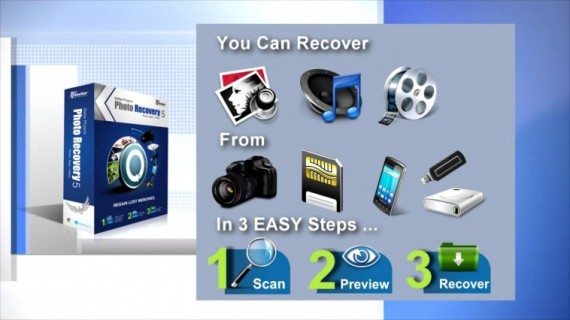Digitalization of cameras is a great invention, which has brought us into a new world of photography. Today, everyone owns a smartphone or tablet and loves to click photos while enjoying with his/her friends and/or family on special occasions, such as birthday parties, anniversaries celebrations, on a tour, and the like. Moreover, those who are photography professionals keep DSLRs as they need to click HD photos. The makers of such great cameras are many, such as Sony, Nikon, Canon, Kodak and more. However, such imported cameras require you to be very much careful, not only while using them but also when they are kept unused.

Devices like digital cameras, smartphones, and tablets look really cool & trendy, as they enable you to capture photos and videos; however, you must take immense care of them. Being careless about your DSLR or other digital photography devices may lead to corruption in photos, or sometimes even the device itself get corrupt, causing a huge loss of money and the images/videos you have captured. One most interesting feature of such devices is that you simply connect them to your Mac, and then transfer all photos and videos. Besides, you do not have to get those photos printed; you can simply go through them on the Mac. It is also very easy to share them with your friends on social networks, viz. Facebook, Twitter, Instagram, WhatsApp and more.
You must be glad thinking that all those photos are secure on the Mac or on the camera itself; however, you cannot be too much sure about security measures you take, as data disasters may encounter anytime and ruin all your photos at once. Though you can recover photos on Mac if they are lost, you need a reliable photo recovery app for the Mac.
Corruption in Photos
In spite of multiple features of digital photos, such as no need to print them, sharing with friends, easy editing, and the like, they are equally prone to corruption due to virus infections, and many other issues like improper shutdown, power fluctuations, and more.
A photo is termed as corrupt if it fails to open or a slight variation in its colors (or it grays out) appears. I am pretty much sure that you delete such a photo right at the moment you see it. In fact, keeping a corrupt photo along with others is not at all secure, as they may also get corrupt.
Causes of Corruption in Photos
Taking about the causes of corruption in photos introduces many factors that could be responsible for it. However, you cannot be sure that the following issue is caused because of that particular factor. Thus, the following issues are responsible for corruption in photos:
- Improper Insertion/Ejection of SD Card from the Camera:
As you know that digital cameras do not have inbuilt storage, they use SD cards to store photos and videos. An SD card slot given on the camera enables you to insert the card. However, you must be careful while inserting and ejecting the SD card, as a little carelessness may cause corruption. - Virus/Malware Infections:
In order to transfer photos and videos from the SD Card to a computer or vice versa, you eject the card out of the camera. If the computer to which you hook up the SD card is infected with the virus and/or malware, the SD Card may also get infected, which eventually causes corruption in photos and other stuff on the card. - Camera Issues:
There might be some issue in the camera, causing unusual effects in photos. For instance, a little defect in the lens or a technical issue in the camera may cause corruption in photos and videos.
Photos Loss due to Manual Issues
In spite of various issues (including the aforementioned ones) causing corruption, situations like, ‘photos got deleted unintentionally’ are also responsible for photos losses. Well, such situations are quite hard to avoid, as you do not know when the moment they do encounter is. The causes of photos losses might be different or results of carelessness, though. However, the recovery steps would not be different at all.
Recover Lost Photos from digital cameras
As mentioned earlier, digital cameras do not have internal storage, and therefore, they require you to insert an SD Card for storing photos and videos. Well, the size of the SD Card is based on two factors, i.e. the storage space required and the compatibility of the camera with the SD Card. However, when a disastrous event causing photos loss from an SD Card or the Mac encounters, all you need to go for is commercial Mac photo recovery software.

Some professional recovery tools let you set scan preferences for efficient scan results. Therefore, before downloading or purchasing the photo recovery software, make sure that it lets you set scan preferences as per the requirements. Once you get it, hook up the SD Card to the Mac, and then scan it thoroughly for lost photos and stuff.
Based on the size of the SD card and the amount of data stored on it, the time elapsed in scanning the card could be up to a few minutes. While the software is scanning the SD card, the preview of the recovered files must be available. Some professional recovery tools provide this feature.
Once the software is done scanning the SD card, filter the recovered photos and stuff if required. Or else, simply save the recovered data. However, I suggest choosing the destination to save recovered stuff different from the SD card to avoid probable issues. Once the software is done saving the recovered items, format the SD card, and then you can write the recovered files back to the SD card.
